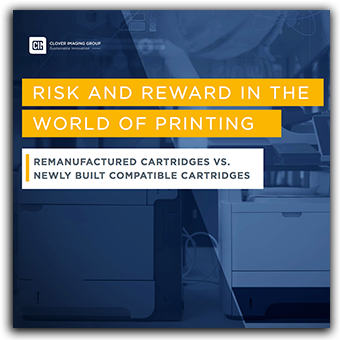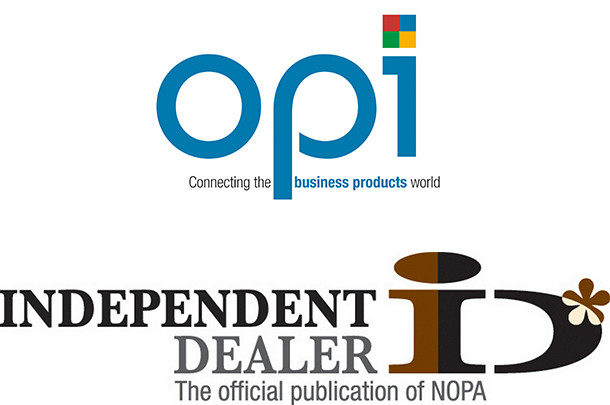CIG Releases White Paper on Remanufactured Cartridges vs. Newly Built Compatible Cartridges
Newly built compatible cartridges claim to offer OEM-like functionality at a fraction of the cost, but CIG outlines how this is untrue.
 For more than 20 years, the office product industry has seen major growth in remanufactured print cartridges. Dealers have always sought lower cost alternatives to Original Equipment Manufacturer (OEM) cartridges, and Clover Imaging Group (CIG) remanufactured cartridges have proven to be the best option. For some sellers concerned primarily with cost, newly built compatible cartridges have become a tempting option. In its newly released white paper, CIG takes a close look at the legal, quality, and environmental risks that must be considered when choosing between a remanufactured and newly built compatible print consumable.
For more than 20 years, the office product industry has seen major growth in remanufactured print cartridges. Dealers have always sought lower cost alternatives to Original Equipment Manufacturer (OEM) cartridges, and Clover Imaging Group (CIG) remanufactured cartridges have proven to be the best option. For some sellers concerned primarily with cost, newly built compatible cartridges have become a tempting option. In its newly released white paper, CIG takes a close look at the legal, quality, and environmental risks that must be considered when choosing between a remanufactured and newly built compatible print consumable.
“We would like office equipment suppliers and managed print service vendors to be aware of the risks that are involved with purchasing newly built compatible cartridges,” said Luke Goldberg, EVP Global Sales and Marketing at CIG. “CIG strongly believes that our remanufactured cartridges are better quality and more environmentally sustainable than newly built compatible cartridges while respecting OEM intellectual property rights. This paper not only tells our side of the story, it backs that story up with historical examples and independent 3rd party findings.”
According to the white paper, in seeking to maximize profits, business owners have a powerful incentive for choosing the lowest cost option for purchasing print consumables. Newly built compatible cartridges fulfill this need but open their customers up to unexpected risks.
These risks largely fall into three broad categories – legal concerns, quality concerns, and environmental concerns. While remanufacturing has proven time and time again that it provides a stable foundation for introducing value into the printer consumable purchase decision, newly built compatibles suffer from a variety of industry-wide issues that can deeply affect process sustainability.
Perhaps the most important warning for dealers is the potential culpability for intellectual property violations stemming from the use of newly built compatible cartridges. OEM’s are increasingly focusing enforcement efforts not just on manufacturers and large wholesalers, but also on dealers and vendors selling newly built compatible cartridges online.
Legally, there is a key difference between remanufacturing an existing cartridge to extend its useful life and simply building and selling a brand-new cartridge that replaces the original. That difference is based on the consumers’ right to repair the products they own. In the landmark case Impression Products vs. Lexmark International, the United States Supreme Court upheld the rights of aftermarket remanufacturers to repair the print cartridges they purchase. In contrast, OEMs are aggressively bringing legal actions against sellers of NBC cartridges and are either winning those suits or extracting settlement terms that ban the infringing new builds.
Addressing quality concerns, the white paper notes that CIG uses independent testing to ensure that CIG’s remanufactured cartridges hold up to the performance standards of their OEM equivalents. In one cited test, the average continuous yield of CIG tested cartridges exceeded the OEM stated yields across all product categories.
In contrast, several OEMs have released independent test results consistently demonstrating the inferiority of newly built compatible cartridges. As these tests show, when the primary goal is low cost, quality suffers.
The final area of concern addressed by the white paper is the poor environmental performance of newly built compatible cartridges. Because newly built compatible cartridges require completely new plastics, metals and other materials, they are inherently less environmentally friendly than remanufactured cartridges that reuse the original OEM cartridge. In addition, a study conducted by HP found that compatible cartridges exceeded numerous EPEAT emission limits, including those relating to styrene emissions, particle production, and volatile organic compounds.
To read the full white paper please click here.



Leave a Comment
Want to join the discussion?Feel free to contribute!